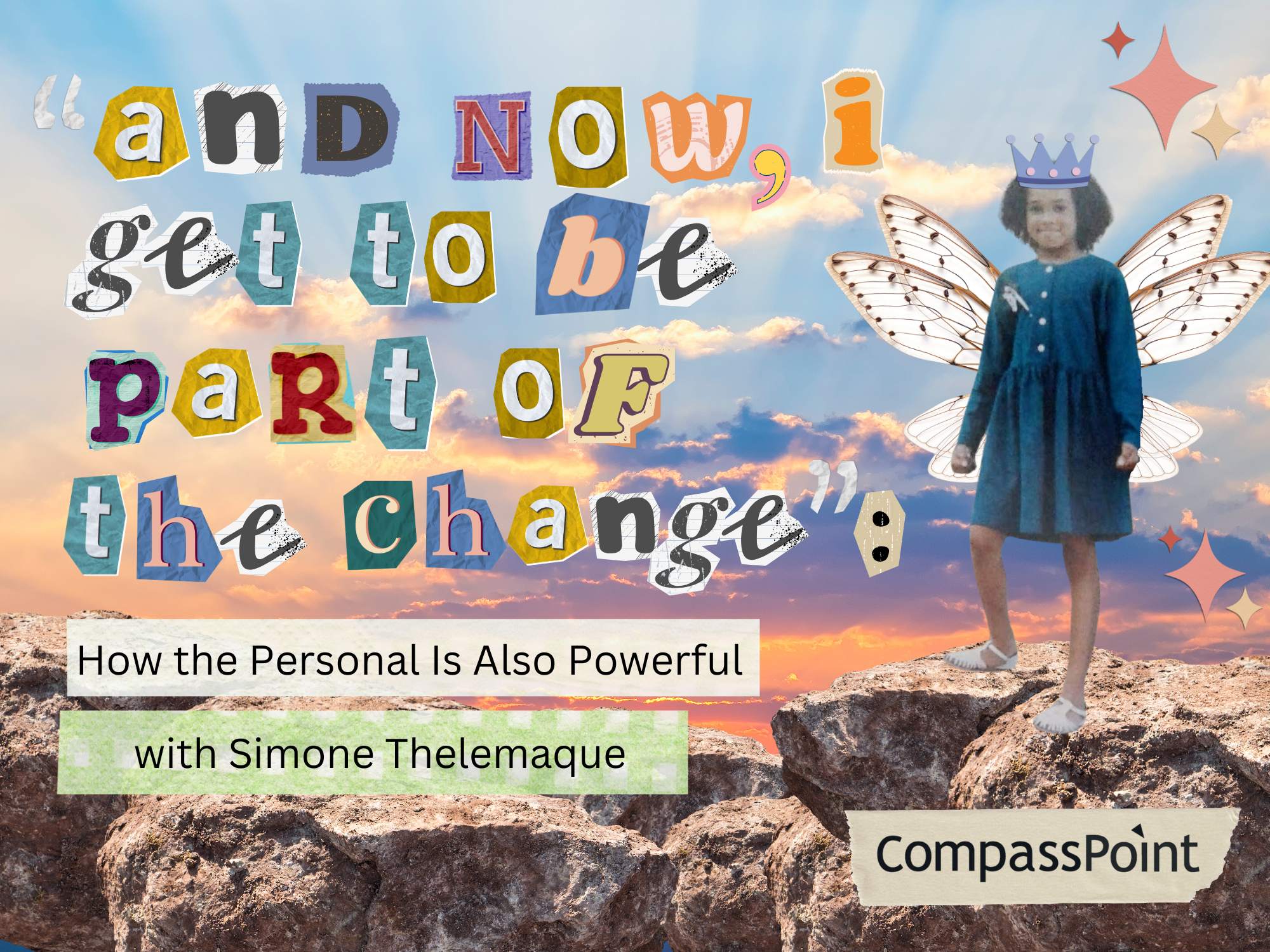In our blog this week, CompassPoint's newest staff member, Asha Mehta, shares how positive or negative feelings about a task influenced her perception of the time she allocated to it. It was a wakeup call to understanding how something as mundane as time tracking could serve as a powerful mirror of our own values and judgments – and a starting place for personal understanding and transformation. Welcome, Asha!
When I started a new job three years ago, I was asked to track my time. My first thought was, "I don’t have time to track my time." As a new mom working two half-time jobs and commuting from San Francisco to Oakland, time had been my enemy. Tracking it seemed like a horrendous task, but one day I begrudgingly began by clicking on a website called: "Toggl: Insanely Simple Time Tracking." Little did I know that I was about to experience a revolutionary change in my life and work. In the six months that followed, Toggl helped me enter what I characterize as a Vipassana meditation of sorts — a radical self-transformation through self-observation. Through a mindfulness mediated by technology, I had a breakthrough in my practice of time management.
Seeing Things as They Truly Are
Vipassana comes from the Buddhist tradition and means to "see things as they truly are." This happens through moment-by-moment awareness and acceptance of one's thoughts, sensations, and feelings. Toggl presented me with moment-by-moment accounts of my workday, and by accident, I stumbled on awareness. I discovered my own psychic landscape. When I was bored by a task, I blew its size out of proportion. When I was engaged, each minute felt like an over-indulgence. Either way, I grossly overestimated how long things took, giving me a constant sense of panic and lack of control. Time sheets: 10 minutes? Toggl time: 2:36 minutes. Draft retreat agenda: 4 hours? Toggl time: 1:59 hours. I became obsessed by my new discoveries and started toggling at home as well. Dishes: I hour? Toggl time: 15:54 minutes. All of a sudden, I was in a mental dialogue with my mother. Why didn' anyone help you with the housework? Why were you so alone around men? My resentment landed in my sense of time. The extra forty-five minutes I padded onto the dishes came from my feelings and judgments about my mother's journey as a woman. The panic on spending too much time on a task I liked came from a sense of duty and self-sacrifice I saw in her. All of this led to factual errors in my calculations of time.
Separating Reality from Your Perception of Reality
"Humans make errors. We make errors of fact and errors of judgment . . ."1 says Gary Wolf in a groundbreaking New York Times Magazine article called "The Data-Driven Life." ". . . Sometimes we can't even answer the simplest questions. Where was I last week? How long have I had this pain in my knee?"2 To change our habits, we need a clear understanding of our own baseline. The complicated part is that this baseline can be buried under many other layers of existence. After I separated reality from my interpretation of reality, my strategies for time management took off.
For example, I have long tried to practice Steven Covey's "putting first things first"3 habit of putting the big rocks of my life in first, then adding pebbles, sand, and water, versus the other way around. However, before Toggl, I could never make things fit regardless of my technique. Through my self-observation, I realized I was actually misjudging the size of the rocks. All of a sudden, first things were easier to put first because I saw all things more clearly, and there was no judgment. &quuot;Electric trackers have no feelings. They are emotionally neutral, but this very fact makes them powerful mirrors of our own values and judgments."4 The process of transformation requires these mirrors, and we have stumbled on a strange time where the ancient and modern can collide in a powerful way to support our growth as leaders.
Asha is a Project Director at CompassPoint with experience in equity-based leadership, facilitation, and community building. Prior to joining CompassPoint, Asha was the Associate Program Director at LeaderSpring where she designed and facilitated leadership development programs for The California Endowment's Building Healthy Communities Initiative and the Oakland Museum of California. She also spent six years as the executive director of the San Francisco Beacon Initiative.
Resources
References
- 1 Gary Wolf, "The Data-Driven Life," New York Times Magazine (2010)
- 2Gary Wolf, "The Data-Driven Life," New York Times Magazine (2010)
- 3Steven R. Covey, The Seven Habits of Highly Effective People (1990), p 145
- 4Gary Wolf, "The Data-Driven Life," New York Times Magazine (2010)





Submit a comment